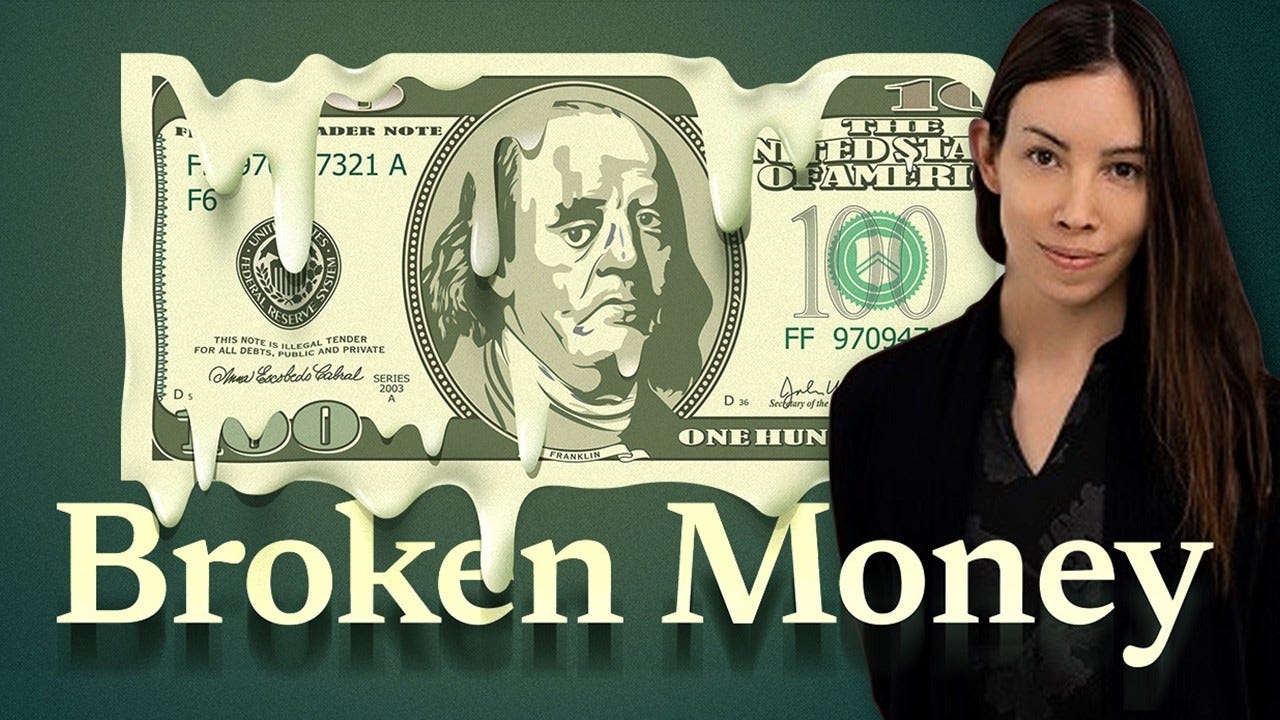Understanding the Fractured Foundations of Money and Banking
A dive into Lyn Alden’s Documentary " How Money & Banking Work (& Why They’re Broken Today)"
If you’ve ever wondered why the financial world feels like a house of cards teetering on the edge, Lyn Alden’s short documentary, How Money & Banking Work (& Why They’re Broken Today), offers a compelling and accessible explanation.
Bull Bitcoin is my prefered Bitcoin only Exchange where I Buy & Sell Bitcoin, do Dollar Cost Average and pay bills with Bitcoin.
Clocking in at just over 30 minutes, this animated masterpiece unravels the complex evolution of money, banking, and the technological disruptions that have left our current system in a state of disequilibrium.
A Journey Through Monetary History
Alden begins with a sweeping historical overview, tracing money’s transformation from tangible assets like gold to the abstract, tech-driven systems we rely on today.
It’s a story of innovation and adaptation: the telegraph revolutionized communication, and with it, the way we transact.
But as she deftly illustrates, each leap forward in technology has also exposed cracks in the monetary foundation.
The documentary shines when it connects these dots—showing how the rapid pace of transactions now far outstrips the sluggish settlement processes that underpin them.
Take the World Wars, for instance. Alden highlights how these global upheavals forced currencies to evolve, often detaching them from physical anchors like gold and thrusting them into the realm of centralized control.
It’s a pivotal shift that sets the stage for today’s challenges, where trust in institutions is stretched thin and the mechanics of money feel increasingly opaque.
The Broken Present
The heart of the documentary lies in its diagnosis of why money and banking are “broken” today.
Alden zeroes in on a critical imbalance: transactions happen in the blink of an eye, yet the systems that finalize them—think bank settlements or international transfers—lag behind.
This disequilibrium, she argues, has birthed a financial landscape riddled with centralization and corruption. It’s not just a technical glitch; it’s a structural flaw that concentrates power in the hands of a few, leaving the rest of us vulnerable to inflation, bailouts, and systemic fragility.
Her analysis isn’t doom-and-gloom, though—it’s clear-eyed and precise. With engaging visuals and a knack for simplifying complex ideas, Alden makes the case that technology, once a liberator of commerce, has now outpaced the frameworks meant to govern it.
The result? A monetary system that’s less resilient and more prone to exploitation than ever before.
Looking Ahead
What sets this documentary apart is its forward-thinking lens.
Alden doesn’t just dissect the past and present; she hints at the future, where emerging technologies—like cryptocurrencies or decentralized finance—could either mend or further fracture the system.
It’s a subtle call to action: understand the problem, and you’re better equipped to navigate (or even influence) what comes next.
Why You Should Watch
At a time when economic headlines dominate our feeds—rising interest rates, banking scandals, or the specter of recession—this documentary is a timely primer. It’s perfect for novices and finance buffs alike, blending historical context with sharp insights into today’s mess.
Alden’s ability to distill decades of monetary evolution into a half-hour narrative is nothing short of impressive, and the animation keeps it engaging without dumbing it down.
So, carve out 30 minutes, grab a coffee, and dive in. You’ll walk away with a clearer picture of why your money works the way it does—and why it might not for much longer.
Wattch below and let me know what you think in the comments.
Are we on the brink of a financial reckoning, or is this just another chapter in money’s long, messy story?
Watch it now.
Post sponsored by Bull Bitcoin, the best Bitcoin only Exchange. Buy & Sell Bitcoin, DCS + pay your bills with Bitcoin.


